It helps us to maintain the brake system in our car in good condition, thanks to which the brakes in the car will be in good condition and will not fail in the event of an emergency on the road. This fluid in the car is responsible for transferring pressure from the brake pedal to the brake units in the wheels. In other words, brake fluid makes sure that all components of the brake system work together properly and as a whole. In order to do this job all year round at all ambient temperatures, the brake fluid must withstand extreme temperatures without boiling or freezing. Unfortunately, over time, brake fluid loses its properties and becomes contaminated. Therefore, in any car, it must be periodically replaced with a new one.
If you do not change the brake fluid in time, then many brake components of the car can fail. As a result, this can directly affect your security.
It is important to know:
Accordingly, every driver must (must) regularly check the level of the brake fluid and its condition. Our guide will help you check the brake fluid level in your car. You will also learn whether or not to add new fluid when you need to completely replace the brake fluid and can learn how to identify a potential fluid leak in your vehicle's brake system.
Master brake cylinder
Beware of fluid leakage
What you need to know about brake fluid
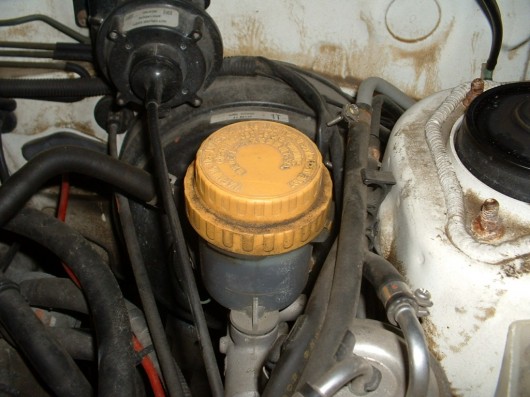
Brake fluid is hygroscopic (absorbs moisture) to help protect brake components. * Brake fluid is light yellow in color * Does not shrink when compressed, ideal for automotive braking applications * Lubricates pistons in the brake master cylinder, caliper pistons and wheel brake cylinders * Brake fluid lubricates the rubber seals in the main brake cylinder and in the brake cylinders mounted on the wheels. * Brake fluid has good resistance to temperature changes * Brake fluid DOT 3 has a boiling point of 205 degrees * liquid boiling point DOT 4 230 degrees * After two or three years of use, the moisture content of the brake fluid rises, which eventually leads to the onset of corrosion of the brake elements and loss of fluid properties. * When using brake fluid, it is recommended to use only the fluid specified by the vehicle manufacturer in the vehicle owner's manual.
Master brake cylinder
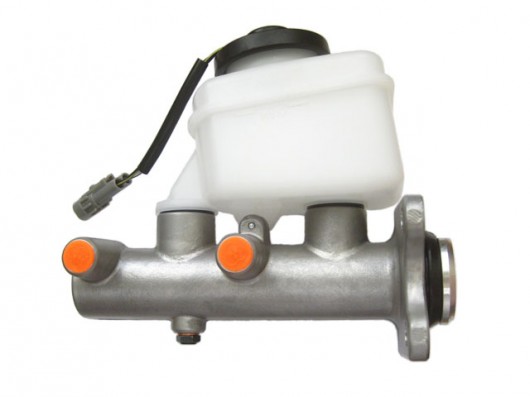
The master brake cylinder works like a pump that supplies brake fluid under pressure to each wheel where the car's brakes are located. That is, every time you apply the brake pedal, the brake master cylinder pumps fluid, directing it throughout the car's brake line.
The master brake cylinder also has a brake fluid reservoir. Thus, in order to check the brake fluid level, you must find this reservoir under the hood of your car.
As a rule, the main brake cylinder is installed on the vacuum brake booster. The brake booster (large round component under the hood of a car) is usually mounted on the driver's side at the rear of the engine compartment. The brake master cylinder is a small metal cylinder with thin metal tubes coming out of the cylinder, over which a metal or plastic container (reservoir) is mounted. This container is filled with brake fluid.
Checking the brake fluid level
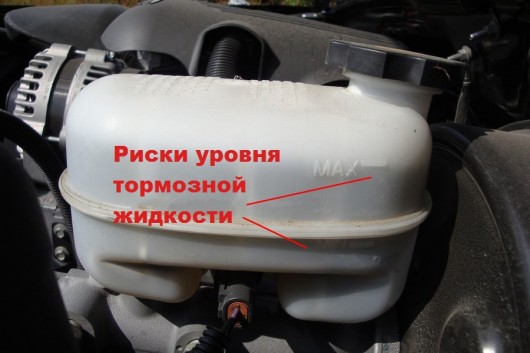
New car models (from the mid-1980s to today) use a translucent container (reservoir) attached to the brake master cylinder. Thanks to the transparency of the container, you do not need to unscrew the cap to check the brake fluid level. When checking the brake fluid level, remember that it must be between the "MIN" mark (minimum mark) and the "MAX" mark (maximum mark).
It is worth noting that some car models (including older ones) have a non-transparent metal reservoir for storing brake fluid. Therefore, to check the liquid level in a metal container, it is necessary to remove the cap.
Before removing the cap from the brake fluid reservoir, be sure to wipe the cap free of dust, oil, dirt, etc. using a clean cloth. This will protect the brake system from contamination before removing the brake fluid reservoir cap.
On older models of cars (and on some modern ones), in order to remove the cover, you may need a screwdriver, which you need to lift the spring clip, or unscrew the bolt at the top of it.

After unscrewing the cap of the brake fluid reservoir, inspect the fluid. If you don't see a solid line marked inside the tank, make sure the fluid level is about 6mm from the top of the tank.
If during the inspection it turned out that the level of the brake fluid is low, then you will have to add it to the optimum level. To do this, use the type of fluid that is recommended by the car manufacturer (usually this is brake fluid DOT 3 or DOT 4).

In some car models, the type of brake fluid used is also indicated under the brake fluid reservoir cap.
If you do not have a manual for the operation of the car, then you can buy or download a manual for the repair and maintenance of your car on the Internet. As a rule, such books contain information about the brand and type of brake fluid used.
You can also contact any auto shop, where the VIN number of your car will determine which brake fluid is used in it.
To get a visual idea of how to check the brake fluid level in a car, you can watch some videos below.
Now that you know how to check the brake fluid level, it's time to check the condition of the fluid, that is, its property.
|
Help site: Over time, the brake fluid level may drop, either as a result of fluid leakage from their system, or due to wear on the brake pads, brake discs, or brake drums (if equipped). As a result of the natural wear of the brake components, the gap between the parts increases, resulting in a decrease in the brake fluid level. Thus, a slight decrease in the level of brake fluid is a completely normal process during vehicle operation. If you notice that the level of the brake fluid has dropped sharply in a short time, then there is a high probability that there is a leak in the brake system that must be found. |
7 Reasons Why You Should Check Your Brake Fluid
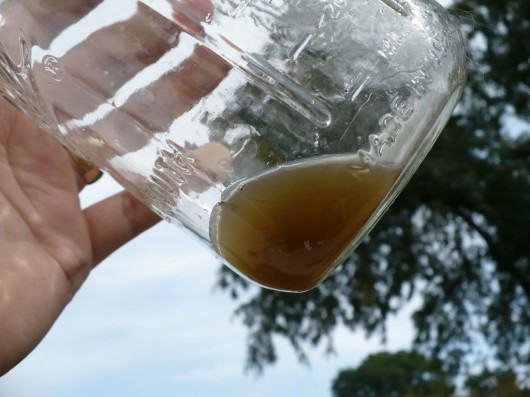
If you regularly check the level of the brake fluid, this does not mean that you monitor the condition of the brake system. In addition to the level, you should also regularly check the condition of the fluid to determine if the brake fluid has lost its chemical properties.
So if you have never tested the properties of a brake fluid, here are 7 reasons why you should definitely do it:
- - Brake fluid contains some alcohol and absorbs moisture
- - Moisture will interact with the metal parts of your brake system and cause them to corrode over time
- - and the seals of the brake system wear out over time and become contaminated from the brake fluid
- - As a rule, the main brake cylinder wears out first, which begins to flow
- - If, as a result of leakage of brake fluid from the master cylinder, it enters the main brake booster, it will have to be replaced
- - Brake fluid, as a rule, should not be used for more than 2-3 years of vehicle operation (with a mileage of no more than 20,000-30,000 per year). After that, the brake fluid completely loses its properties. As a result, due to bad fluid in your car, they may suddenly fail completely.
- - Also, if you do not change the brake fluid in time, your brake system may fail. Especially if yours is equipped with ABS. In this case, the repair can be several thousand dollars.
How to check the properties of the brake fluid
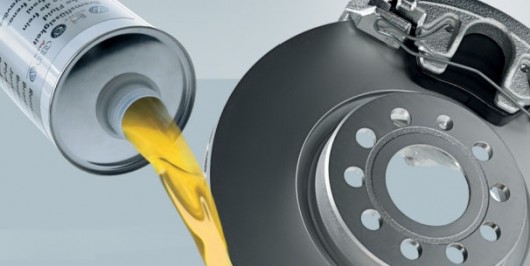
Some car manufacturers recommend, as we have already said, changing the brake fluid every two years. Some vehicle manufacturers state that the brake fluid change interval should be every five years. But some produced sometimes do not indicate the service life of the brake fluid. But this does not mean that the brake fluid is eternal. We did not advise changing the fluid very infrequently. This is especially true for the operation of a car in our country, where conditions are much more severe than in the same Europe.
Unfortunately, many car owners do not pay due attention to the brake fluid, forgetting to check not only its level in the reservoir, but also change it to a new one after a certain period of operation of the car. As a result, an incorrect fluid change interval leads to contamination and corrosion of the brake system.
Many factors influence the properties of brake fluid. For example, changes in climatic conditions throughout the year, the moisture content in the environment, the condition of the brake system and the removal of the brake fluid reservoir cap directly affect, which eventually begins to corrode the components of the brake system over time.
That is why it is so important to check not only the level of the brake fluid, but its condition. We recommend checking the brake fluid twice a year and replacing it with new fluid every two to three years, even if your car manufacturer recommends that you change your brake fluid at longer intervals of ownership.
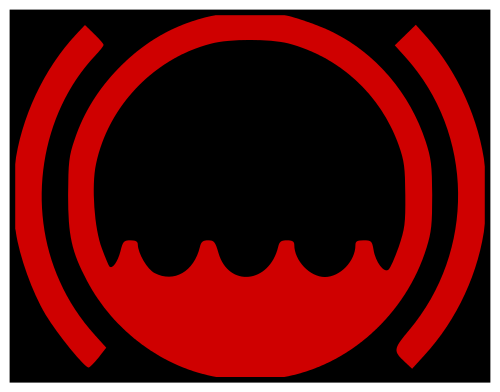
Many also mistakenly believe that the condition of the brake fluid can be determined by its color. But in reality, the color of the fluid cannot accurately tell you the actual properties of the brake fluid.
Yes, when the fluid is new it is usually a clear light yellow color which can darken over time. But a change in color is not necessarily an indication of deterioration in the properties of the brake fluid.
On the other hand, contamination of the fluid (with the exception of the accumulation of moisture) can lead to darkening of the brake fluid.
The easiest and most practical way to check the condition of the brake fluid is to use brake fluid test strips. You can buy test strips at a car dealership or order them online.
Testing the property of a liquid will only take 1 minute.
Checking brake fluid with test strips
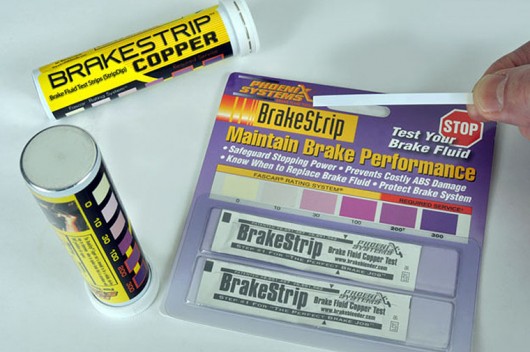
1. To test the brake fluid, you must clean the fluid reservoir cap from dust, dirt, etc. with a clean cloth and then open it.
2. Then take the test strip out of the package.
3. Dip the test strip partially into the brake fluid reservoir.
4. Install the brake fluid reservoir cap back.
5. Wait 30 to 60 seconds for the liquid to react with the chemicals applied to the test strip.
6. Look at the surface of the test strip, and compare them with the samples indicated on the package (see the description of the test samples on the package or in the instructions for the test strips).
7. If the color of the test strip has changed, then this indicates that the brake fluid in your car is in good condition.
Thanks to these test strips, you will save yourself the question of whether to change the brake fluid to a new one.
In addition, the Russian market also has electronic testers with which you can check the condition of the brake fluid. But, unfortunately, the cost of such devices is justified only for the use of testers or private auto repair shops.
Knowing how to check brake fluid, you can in the easiest way. By changing the brake fluid in time and monitoring its level in the brake system, you contribute to the long service life of the entire brake system. If you do not monitor the brake fluid in the car, this can lead to premature failure of the brake system, the repair of which can be very expensive.
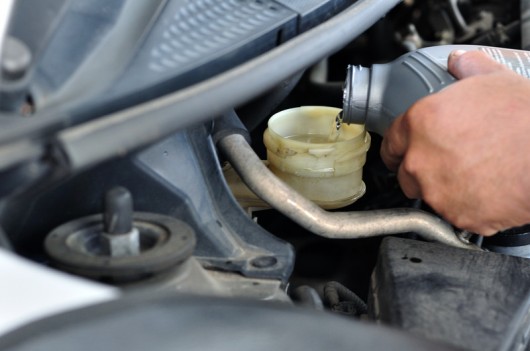
Thus, check the brake fluid level at least once a month or every time you lift the hood of your car. But try not to lift the cap of the brake fluid reservoir frequently to avoid the rapid saturation of the fluid with moisture contained in the air.
Also check the condition (property) of the brake fluid once every two years and, if necessary, replace it with a new one.







